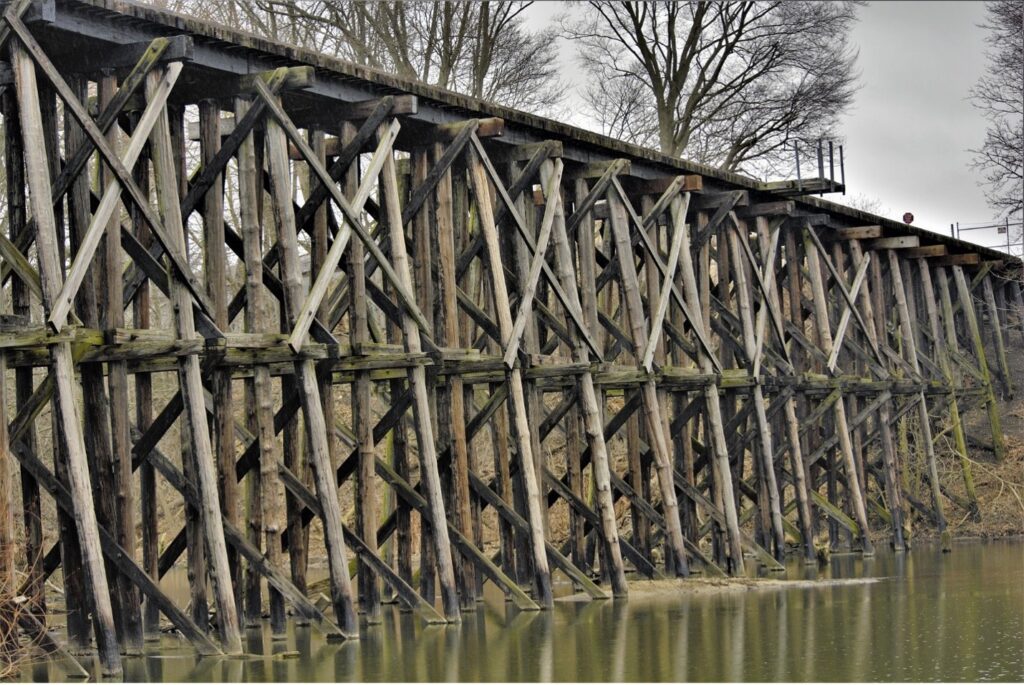Bracing systems play a crucial role in the stability and safety of modern buildings. A bracing system is a structural element to resist lateral forces like wind, seismic, and other loads that can cause the building to sway or collapse. A well-designed bracing construction can improve a building’s ability to withstand these forces and minimize damage to the structure and its occupants.
This blog post will explore what exactly a bracing system is, its purpose for bracing construction and framing, what bracing plans are, and where you can get a reliable bracing structure solution.
What Is A Bracing System?
As mentioned earlier, buildings that are vulnerable to lateral loads, including wind and seismic pressure, often use a bracing construction solution since it is a highly robust structural system. Braced frames often use members constructed of structural steel because of the material’s high strength in both tension and compression. Vertical loads are supported by the frame’s beams and columns, while the bracing structure supports lateral loads.
Nevertheless, bracing placement may be challenging since it might disrupt the overall appearance of the façade and the order in which windows and doors are installed. As a result, bracing has become an integral part of the design of many contemporary and postmodern buildings.
As far as structural bracing types are concerned, these are given below:
Single Diagonals:
- Uses a single diagonal member to stabilize the frame.
- Must be resistant to tension and compression.
Cross-Bracing:
- Uses two diagonal members crossing each other.
- Resistant to tension.
- Can cause interference with window openings and more bending in floor beams.
K-Bracing:
- Connects to columns at mid-height.
- Allows for more flexibility in the façade and results in less bending in floor beams.
- Not recommended in seismic regions due to the potential for column failure.
V-Bracing:
- Two diagonal members form a V-shape.
- Can considerably lessen the buckling capacity of the compression brace.
- Used in seismic regions with centric bracing structures.
Eccentric Single Diagonals:
- Can be used to brace a frame.
What Is The Purpose Of Bracing Construction?

Bracing serves several functions: buckling control, load distribution, and dimensional control.
Buckling Control of the Main Beams
One of the primary reasons for using bracing in a steel-concrete composite bridge is to prevent buckling in the main beams during construction. Wet concrete can place significant stress on the steel beams, which causes the compression flange to buckle toward the minor axis. Bracing can provide lateral/torsional restraint to the compression flanges, preventing lateral torsional buckling. A small amount of steel bracing can pointedly increase the bending resistance of the main beams.
Load Distribution
Bracing can also be used to distribute vertical bending effects between the main beams, ensuring lateral effects (wind and collision loading) are shared among all beams. This sharing is particularly important at lines of support, where lateral loads are often resisted at one fixed or guided bearing. Bracing construction can help share loading between the beams, preventing a single beam from carrying the entire load, especially in steel composite bridges during construction.
Bracing systems can provide the radial component of the force that results from the curved flange’s changing direction in bridges curved in plan. The additional vertical bending effects in the connected beams resist an effective couple of forces at tension and compression flanges.
Dimensional Control
Bracing can control dimensional deviations resulting from unequal loading or deviations from exact geometry. Without constraints, the horizontal distances between adjacent girder flanges will vary, causing problems during construction, mainly if permanent formwork is utilized. Control bracing can be introduced to limit deviation and tie the beams together, often with just one or two single angles. Care must be taken to ensure the bracing is not overloaded and vulnerable to fatigue.
While the bracing structure is beneficial, it may affect load distribution in a structure and attract significant forces, particularly if a bridge deck is not equally loaded across its width. Hence, it is crucial to design bracing systems appropriately and locate them close to one side of the main beam site splice positions for dimensional control but not too close to conflict with splice plates.
What Are Bracing Plans?
Bracing construction plans help engineers figure out how to best distribute the system’s parts to counteract forces like wind and seismic activity. To guarantee the impeccable quality of the bracing plans, it is essential to work with knowledgeable, skilled, and precise partners in the field of architectural design drafting, offering high-quality and thorough architectural CAD services.
While building bracing plans, several precautionary considerations need to be taken into consideration to support a strong seismic performance:
- They are required to proceed in two directions that are orthogonal to one another. In structures with a timber frame, they have to be aligned parallel to the outside walls.
- When it’s at all practicable, the lines need to be spaced uniformly.
- During the building of timber-framed floors and ceilings, it is possible to transmit lateral loads between the bracing construction lines.
- The bracing lines should be able to accept the bracing components located on the lines.
We Provide Superior Bracing Construction Solutions!
YENA Engineering has a wealth of expertise working on steel construction projects such as high-rise structures, roof systems, bridge components, industrial buildings, and fabricating construction braces and other associated construction equipment. Our company is equipped to carry out projects in accordance with EN 1090-1 EXC2, EXC3, and EXC4 standards. We provide a one-stop-shop sourcing solution for building projects, which includes shop designs, the procurement of raw materials, surface treatment, galvanizing, drilling, cutting, welding, and finishing.
To learn more about how we may provide superior bracing construction solutions, contact us now.


